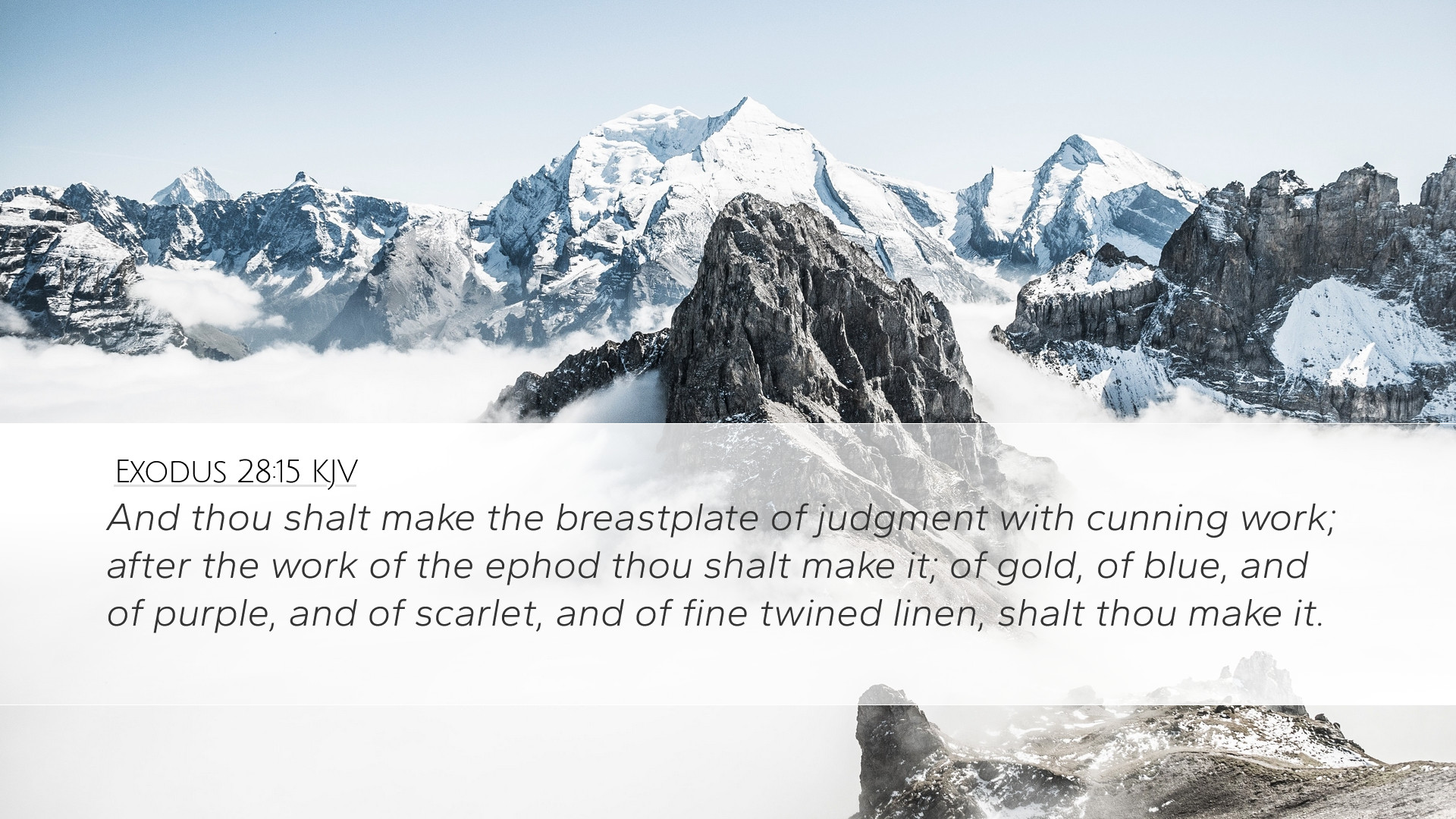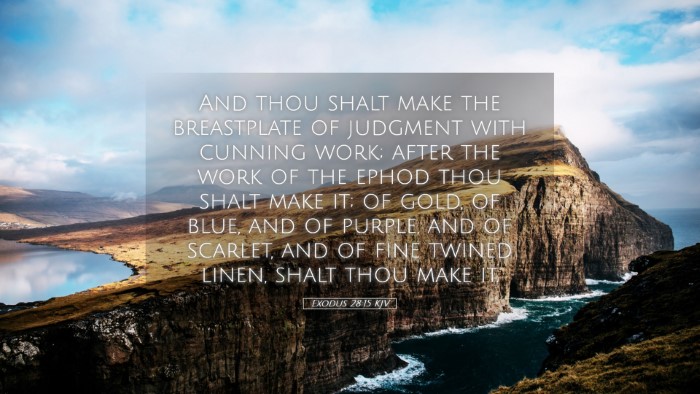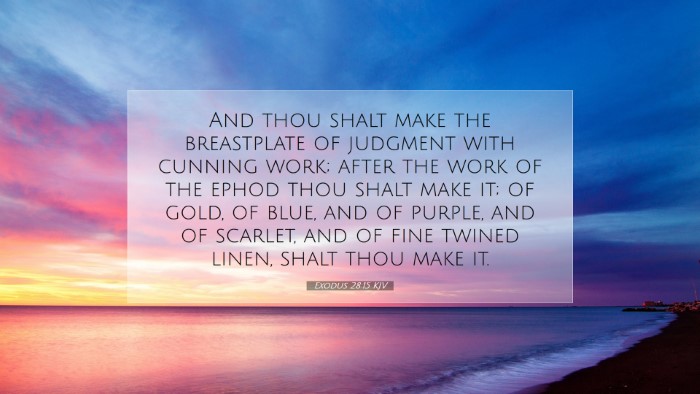Commentary on Exodus 28:15
Exodus 28:15 states: "And thou shalt make the breastplate of judgment, with cunning work; after the work of the ephod thou shalt make it: of gold, of blue, and of purple, and of scarlet, and fine twined linen, shalt thou make it."
Introduction
This verse is part of the detailed instructions given to Moses regarding the garments of Aaron, the High Priest. The reference to the breastplate of judgment reveals its significance not only in function but also in theology. The breastplate serves as a means through which God's will would be discerned among the people of Israel.
The Importance of the Breastplate
The breastplate was more than just an ornamental piece; it functioned as a representation of the twelve tribes of Israel. Each tribe was inscribed on the stones set within the breastplate, symbolically placing the people before God as their intercessor.
Symbolism in the Breastplate
- Divine Representation: Aaron's role as the High Priest included a representation of the people before God. The breastplate, therefore, represents the people's intimate connection to God.
- Judgment and Decision Making: The term "breastplate of judgment" indicates its specific function in seeking divine guidance, often used in tandem with the Urim and Thummim which were placed within it.
Insights from Commentators
Matthew Henry
Henry emphasizes the conceptual role of the breastplate, arguing that it was to serve as a reminder of God's covenant with Israel. He points out that the design's intricate craftsmanship reflects God’s careful attention to detail in His relationship with His people and the gravity of the priest's role in mediating that relationship.
Albert Barnes
Barnes notes that the materials used for the breastplate—gold, blue, purple, scarlet, and fine linen—are symbolically rich. Gold symbolizes divinity and purity, while the colors represent different attributes of God and the royal nature of His kingdom. He highlights that the artistic work was not merely for beauty but served to honor the holiness of God's presence within the tabernacle.
Adam Clarke
Clarke delves into the specifics of the craftsmanship required for the breastplate. He notes that the term "cunning work" demonstrates a necessary skill and precision, indicating that the work of God must be treated with utmost care and reverence. Clarke also discusses the significance of the breastplate as a vessel of judgment, reiterating its role in determining God’s will in the community.
Theological Reflections
As students and scholars of the biblical text reflect upon Exodus 28:15, several theological implications arise:
Intercession
The breastplate serves as a powerful illustration of intercession. Just as Aaron carried the names of the tribes upon his heart, Jesus Christ, our High Priest, carries us before God. The concept of divine representation carries through the entire biblical narrative, culminating in the New Testament and the ministry of Christ.
Covenant Relationship
The detailed instructions for the breastplate underscore the importance of the covenant between God and Israel. The very fabric of the garments speaks to the identity of the nation as God's chosen people, reminding us today of our own identity in Christ.
Seeking Divine Guidance
The use of the breastplate in decision-making highlights the need for believers to seek God’s wisdom in their lives. Pastors and leaders must be diligent in prayer and reliance on God’s leading, much like Aaron was when he sought divine counsel.
Conclusion
In summary, Exodus 28:15 presents an intricate design that transcends material imagery to reveal deep spiritual truths. The breastplate of judgment plays a pivotal role in the theological framework of intercession, representation, and guidance—all critical for understanding our relationship with God. As both pastors and laypeople engage with this text, may they draw a deeper understanding of God’s desire to be involved in the lives of His people and the call to carry that responsibility with reverence and diligence.


